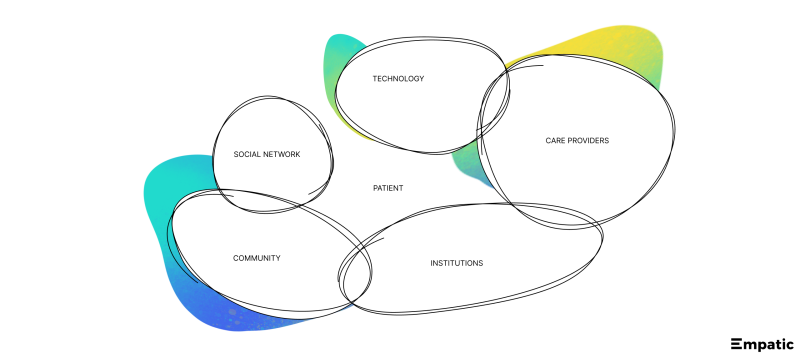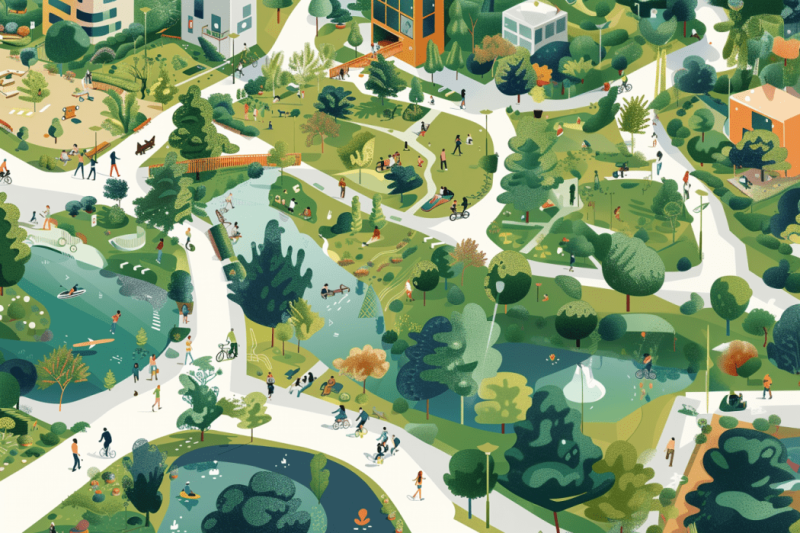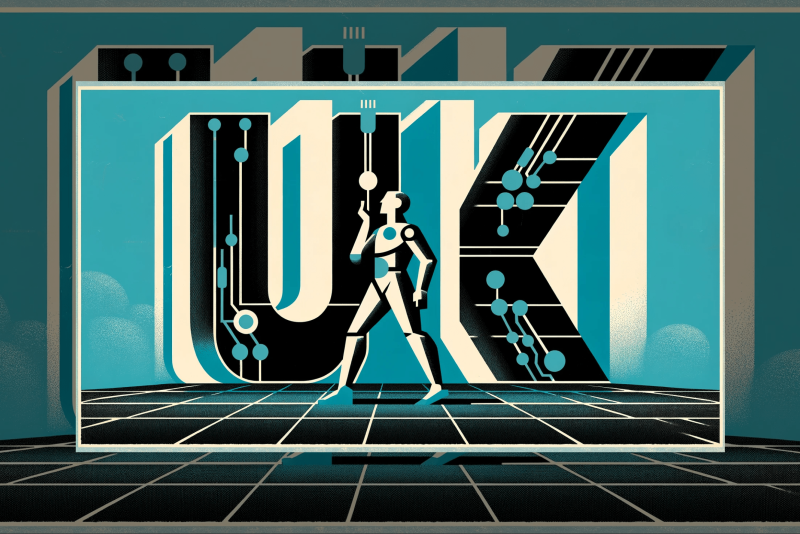Roche Using design thinking to diagnose sooner
Health Innovation:
Co-creation against neurodegenerative diseases.
We believe co-creation is innovation in its most successful form. How can we use it to help patients with severe neurological diseases?
With a working group of health experts, we co-created innovative solutions for the pharma industry, specifically in neuroscience. Through design research, diverse stakeholder interviews, and a series of design-thinking workshops, we worked collaboratively to understand the current patient journey and its pain points. This became the foundation for our UX workshops, in which innovative solutions were developed through co-creation.
Design research by the numbers
-
6
Countries and international Roche teams involved in the design research to find international problems.
-
12
Subject area experts involved in co-creating solutions in design workshops.
-
14
Key design opportunity areas with maximum impact potential, we found through customer journey mapping.
-
12,780
Minutes of Zoom moderated UX Workshops, design reviews, and design research.
-
Background
Neuroscience has a complicated history in the healthcare industry, due to the pervasive nature of neurological conditions and the absence of specific treatments for them. This is slowly changing, as treatments improve and prognoses become more promising. Despite this progress, treatment outcomes have been slow to improve because of a lack of diagnoses. Consequently, this is one of the most rapidly expanding areas of pharma research.
Roche is one of the largest players in pharma, and their diverse teams and goals require them to think holistically about health conditions. Additionally, they are in the unique position of having the ability to offer better treatments, while at the same time possessing the right knowledge and network to improve the diagnostic journey.
Putting these resources to use in the most impactful way was the aim of this co-creation project.
-
Challenge
Roche’s experience in both neurological diagnosis and treatments, gives them a unique opportunity to create real change and improve treatment outcomes in neuroscience.
Nevertheless, this is a relatively new field, and so the first challenge was to understand exactly how pharma firms can – or should – address the treatments, the patients and the various care providers involved. Design thinking and co-creation offered a solution to this. We brought all these players to the table to collaborate and create a new service direction.
This working group was comprised of experts from four key international markets – the US, Canada, Spain and Italy – which each have their own specific needs, but collectively create a strong sample of international medical markets. The entire project was conducted remotely, for maximum inclusion.
Co-creation techniques in these UX workshops with international experts allowed us to use design thinking to uncover where the pain points are for the general practitioners and neurologists on the ground, and even more importantly, to evaluate the likely impact of targeted solutions.

Project process
From design research involving individual interviews with the experts to UX workshops focused on co-creation, and countless design and review sessions with the Roche pharma team, we systematically moved from mapping the wider customer journey map to exploring concepts for specific solutions.
Workshop 1 focused on building a comprehensive customer journey map of the diagnostic journey – including the points of view of diverse stakeholders. This concluded with a discussion of all the possible pain points and where they are experienced on the journey.
In Workshop 2 we expanded on this initial design research into the most promising pain points by turning them into “How Might We?” questions, which allowed us to begin brainstorming creative solution concepts.
The third and final workshop was spent digging deeper into the top three solution concepts, determining early requirements, and exploring how these might look in practice. It was also crucial to use the participants’ expertise to closely examine how the ideas could create concrete impact.

"The co-creation workshops were so productive, I was going to suggest we keep doing exactly the same for the next 3 years."General Practitioner, South Carolina, USA
Outcome
The co-creation activities in the UX workshops resulted in a comprehensive document detailing all the findings and steps we took, providing Roche with the tools to take their next steps in the neuroscience field. We communicated both the process and the findings in great depth, to illustrate the path and design thinking approach taken by the working group. This included suggestions for how the group can continue to use design thinking to further their goals.
The workshops revealed various pain points – or opportunities – in neuroscience for the pharma industry. These opportunities lay the foundation for fit-for-purpose digital solutions that could improve this customer journey for the many stakeholders involved.
The final three concepts will move forward within Roche depending on how they fit into the organization, whether that is further investigation, field studies, early prototyping and partnerships, or pilot studies.
Methods we used
-
How Might We Questions
-
Journey Mapping
-
Outcome-Driven Innovation
-
Remote User Testing
-
Strategy & Concept Development
-
Target group interviews
-
User Journey Mapping
-
User Stories
-
UX Research
-
Workshop


